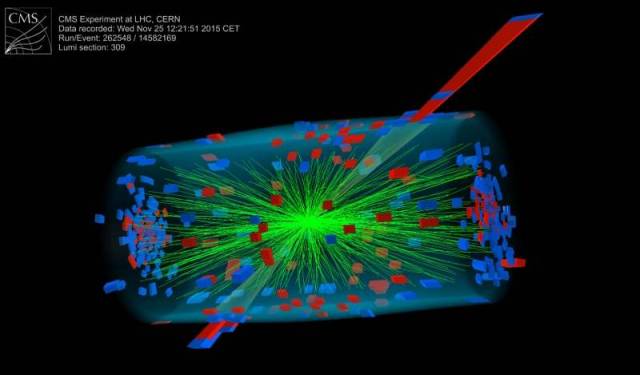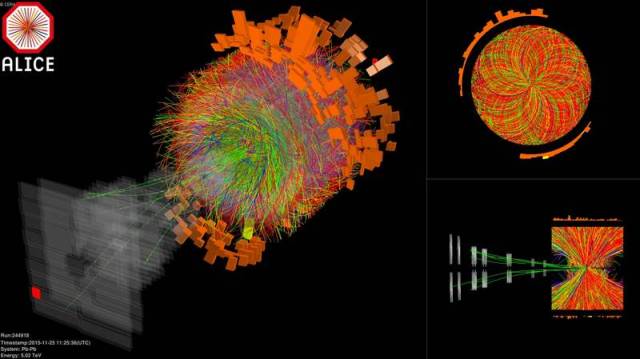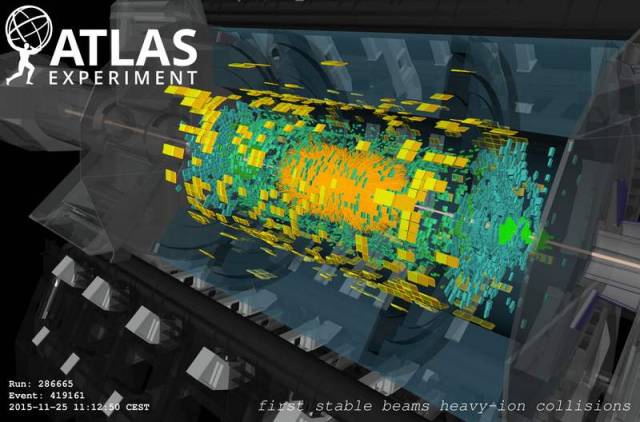Scientists at LHC are now able to recreate in the lab, the momentous time of the creation of the universe.
After the successful restart of the Large Hadron Collider (LHC) and its first months of data taking with proton collisions at a new energy frontier, the LHC is moving to a new phase, with the first lead-ion collisions of season 2 at an energy about twice as high as that of any previous collider experiment.
Above: Lead ions collide in the CMS detector (Image: CMS)
Top image: One of the first heavy-ion collisions with stable beams recorded by LHCb on 25 November 2015.
Following a period of intense activity to re-configure the LHC and its chain of accelerators for heavy-ion beams, CERN’s accelerator specialists put the beams into collision for the first time in the early morning of 17 November 2015 and ‘stable beams’ were declared, marking the start of a one-month run with positively charged lead ions: lead atoms stripped of electrons. The four large LHC experiments will all take data over this campaign, including LHCb, which will record this kind of collision for the first time. Colliding lead ions allows the LHC experiments to study a state of matter that existed shortly after the big bang, reaching a temperature of several trillion degrees.
CERN Director-General Rolf Heuer, said:
“It is a tradition to collide ions over one month every year as part of our diverse research programme at the LHC. This year however is special as we reach a new energy and will explore matter at an even earlier stage of our universe.”
Early in the life of our universe, for a few millionths of a second, matter was a very hot and very dense medium – a kind of primordial ‘soup’ of particles, mainly composed of fundamental particles known as quarks and gluons. In today’s cold Universe, the gluons “glue” quarks together into the protons and neutrons that form bulk matter, including us, as well as other kinds of particles.
Lead ions collide in the ALICE detector (Image: ALICE)
ALICE collaboration spokesperson Paolo Giubellino, explains:
“There are many very dense and very hot questions to be addressed with the ion run for which our experiment was specifically designed and further improved during the shutdown. For instance, we are eager to learn how the increase in energy will affect charmonium production, and to probe heavy flavour and jet quenching with higher statistics. The whole collaboration is enthusiastically preparing for a new journey of discovery.”
One of the first heavy-ion collisions with stable beams recorded by ATLAS in November 2015.
source CERN








Leave A Comment